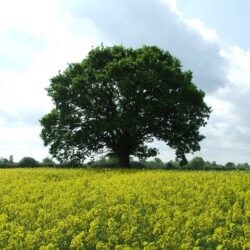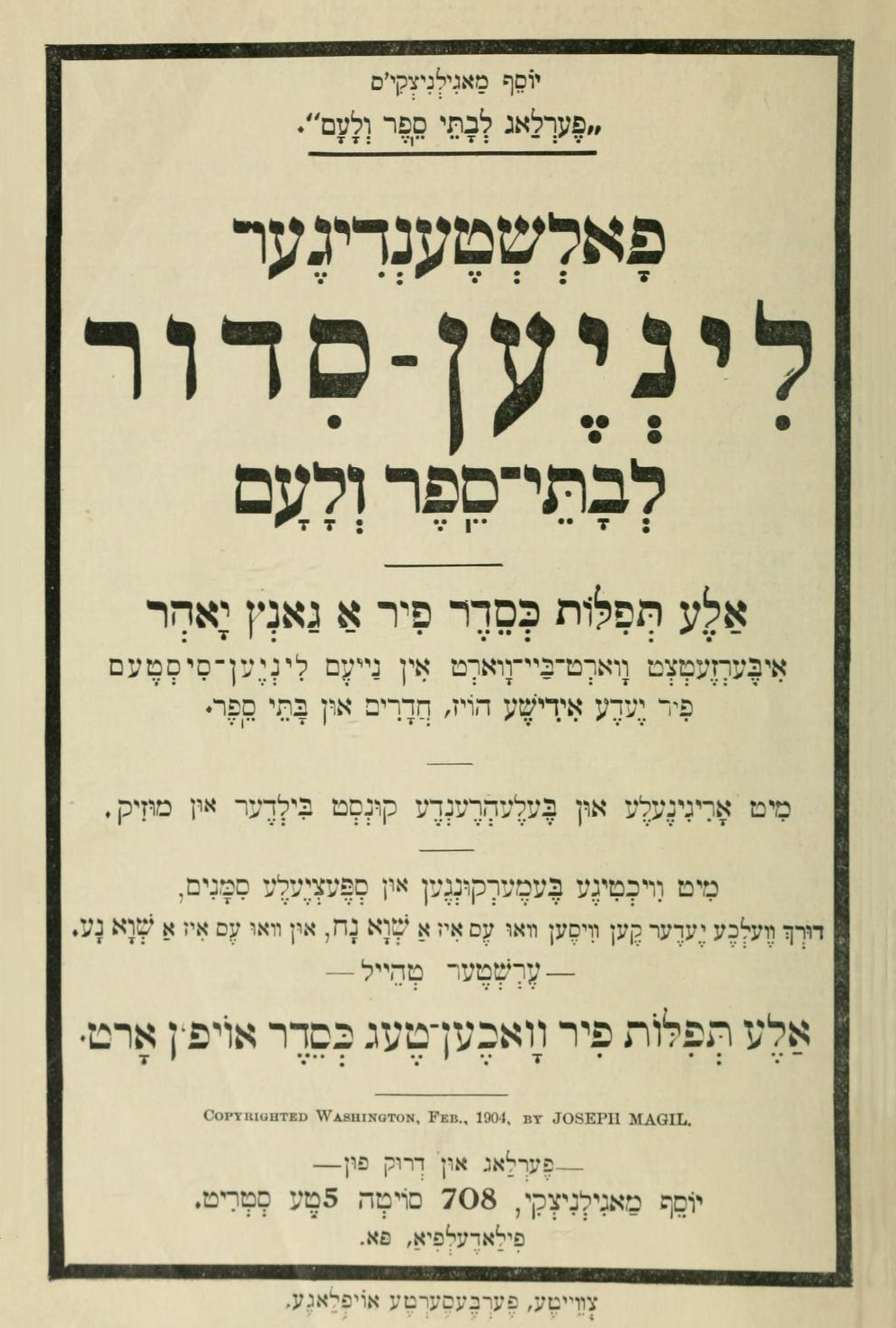📖 סִדּוּר לְבָתֵּי־סֵפֶר וְלָעָם (אשכנז) | Siddur for the School and the People — a bilingual Hebrew-Yiddish prayerbook with a linear translation in two volumes by Yosef Mogilnitski (1904)
Source Link: https://opensiddur.org/?p=62023
open_content_license: Creative Commons Attribution-ShareAlike (CC BY-SA) 4.0 International copyleft license date_src_start: 1904-00-00 date_src_end: 1904-00-00 languages_meta: [{"name":"Hebrew","code":"heb","standard":"ISO 639-3"},{"name":"Yiddish","code":"yid","standard":"ISO 639-3"}] scripts_meta: [{"name":"Hebrew (Ktav Ashuri)","code":"Hebr","standard":"ISO 15924"}] Date: 2025-06-11
Last Updated: 2025-09-05
Categories: Comprehensive (Kol Bo) Siddurim
Tags: 20th century C.E., 57th century A.M., linear, Nusaḥ Ashkenaz, Philadelphia, Yiddish translation
Excerpt: This is Joseph Magil's linear bilingual Hebrew-Yiddish siddur containing two volumes: the first for weekdays and the second for shabbat and festival days. The second volume appears immediately after the first volume ends on page 192, and uses its own separate pagination. . . .
Content: This is Joseph Magil’s linear bilingual Hebrew-Yiddish siddur containing two volumes: the first for weekdays and the second for shabbat and festival days. The second volume appears immediately after the first volume ends on page 192, and uses its own separate pagination. In the title, the siddur is described as פאלשטענדיגער (spelled by Weinreich as פֿולשטענדיק), meaning “comprehensive.” This is reflected in Magil’s Complete (Hebrew-English) Linear Prayer Book, a Hebrew-English edition published by Magil in 1908.
This work is in the Public Domain due to its having been published more than 95 years ago.
This work was scanned by Kate Farnworth of the Internet Archive in 2011 from an item held in the University of Toronto (with funding from the University of Toronto).
Scanning this work (making digital images of each page) is the first step in a more comprehensive project of transcribing each prayer and associating it with its translation. You are invited to participate in this collaborative transcription effort!
Contributor: Yosef Mogilnitski
Co-authors:
-

Name: Yosef Mogilnitski
Bio: Yosef ben Yuzl Mogilntski (also Magilntski and Magilntzky, Americanized: Joseph Magil, March 17, 1870-February 10, 1945) was born in Raseyn (Raseiniai), Kovno district, Lithuania. Until age fourteen he attended religious elementary schools and yeshivas, while stealthily studying modern Hebrew and Russian. At age sixteen he published essays in Hamelits (The spectator) and Yudishe folksblat (Jewish people’s newspaper). In 1889 he moved to Mitave (Mitava), Courland. There he studied German and acquainted himself with German literature. In 1890 he returned to Raseiniai and became a teacher in the school for the society “Banot Tsiyon” (Daughters of Zion). In 1892 he made his way to the United States, settled in Philadelphia, and founded there a Hebrew-Yiddish school called “Bene Tsiyon” (Children of Zion). In 1894 he founded in Philadelphia Yudishes folks blat (Jewish people’s newspaper), a biweekly published by the Mogilnitski Brothers and edited by Yoysef Mogilnitski, which came out for approximately one year. He also published articles in Der literarishe shtrahl (The literary ray [of light]), “monthly with an English division”—motto: “Literature and Science”—in Philadelphia, first volume (September 1899), last issue (February 1906). He also wrote (using the pen name “A. Mogil”) for Nyu-yorker yudishe folks-tsaytung (New York Jewish people’s newspaper) (1886-1889) and other publications. He published textbooks for schools and Talmud-Torahs (in Yiddish with English translation), including: Mogilnitskis linyen skul khumesh, oder oyzer hamore vehatalmid (dem lehers un shilers hehilfe) (Mogilnitski’s linear school Pentateuch, or an aide for the teacher and the student), “an entirely new and easy method of instruction in the entire Pentateuch, without change or abridgement, with great success, with assistance from a new ‘linear system,’ for [secular] schools, religious elementary schools, Talmud-Torahs, and self-study” (Philadelphia, 1899); Mogilnitskis hamekhin lakhumesh (Mogilnitski’s preparation for Pentateuch [study]) (Philadelphia, 1906), 199 pp.; Mogilnitskis linyen megiles ester (Mogilnitski’s linear Scroll of Esther) (Philadelphia); Mogilnitskis hagode shel peysekh (Mogilnitski’s Passover Haggada); Mogilnitskis kovets shire tsien veshire am (Mogilnitski’s collection of poems of Zion and poetry of the people) (Philadelphia, 1906), “fifty-six of the best poems in Hebrew, Yiddish, and English, with notes to sing and play in pocketbook format.” He also published: Sider lebote-seyfer velam (Prayer book for schools and the people) (Philadelphia, 1904), 176 pp., “complete prayer book for the entire year, all of the prayers all in one place, for every Jewish home, religious elementary schools, and schools, with important remarks and special notes by means of which everyone can know where one finds the two kinds of shva, by Yoysef son of Yude Mogilnitski.” He died in Philadelphia. (from the short biography by Zaynvl Diamant posted at Yiddish Leksikon. See there for sources.)
Website: http://yleksikon.blogspot.com/2017/07/yoysef-yuzl-mogilnitski-magilnitski.html
Profile Link: https://opensiddur.org/profile/yosef-yuzl-mogilnitski
Featured Image:

Title: Folshtendiger linyen Sidur (Joseph Magil 1904) – title
Caption: Folshtendiger linyen Sidur (Joseph Magil 1904) - title



